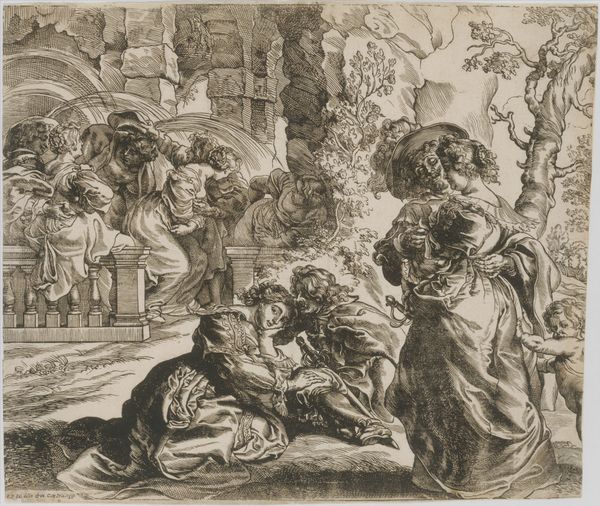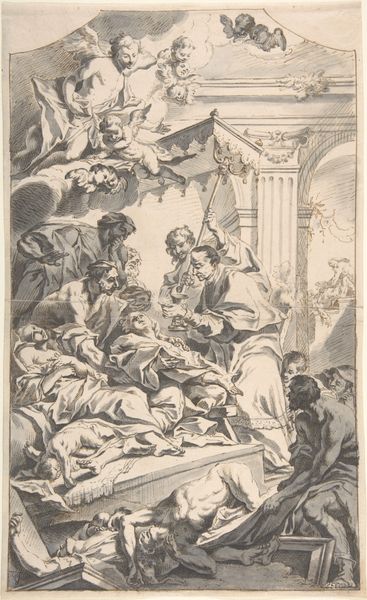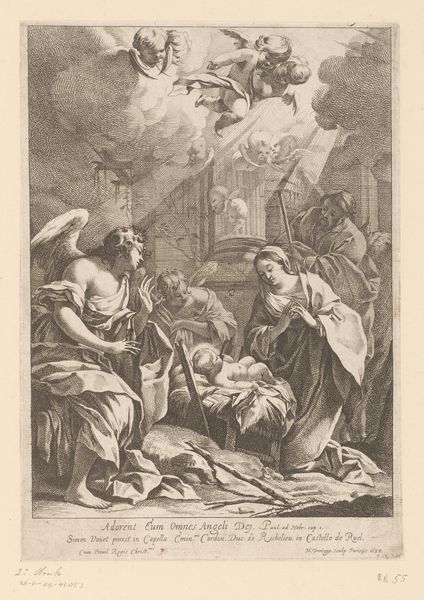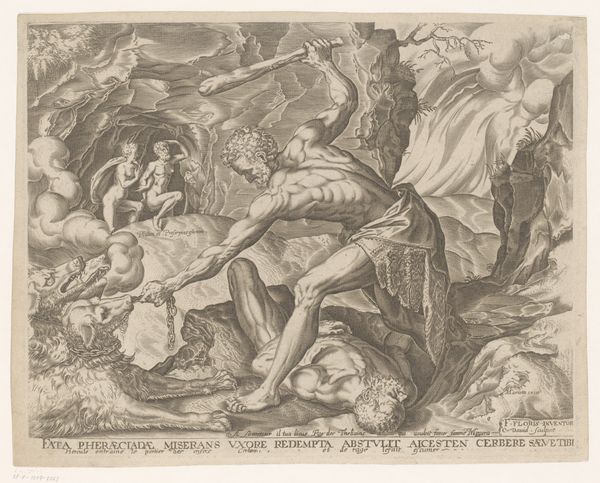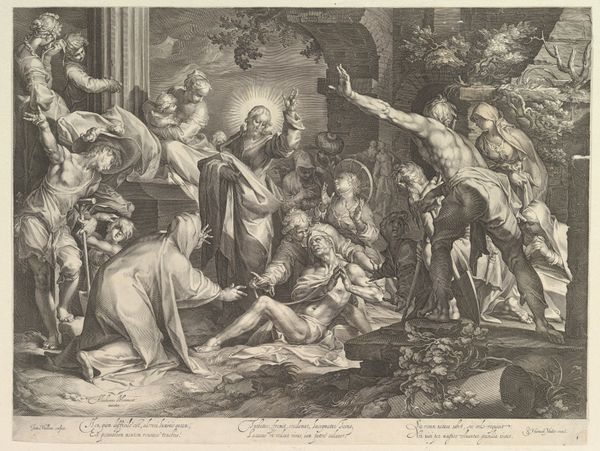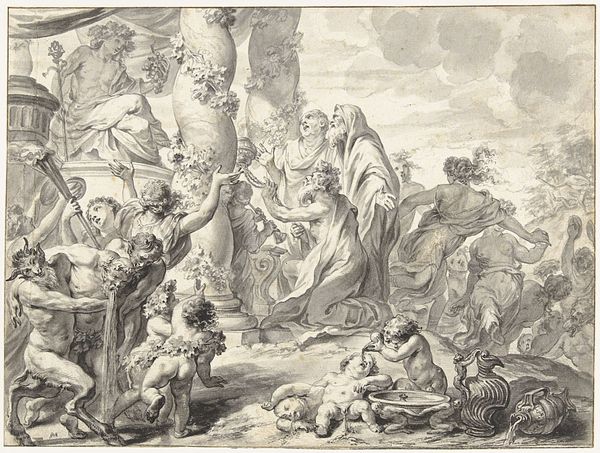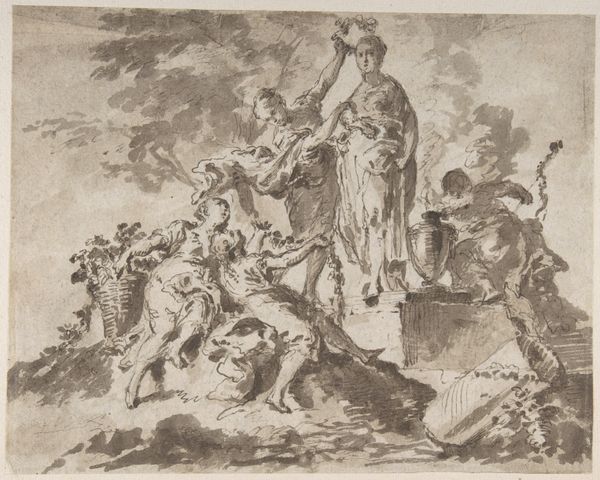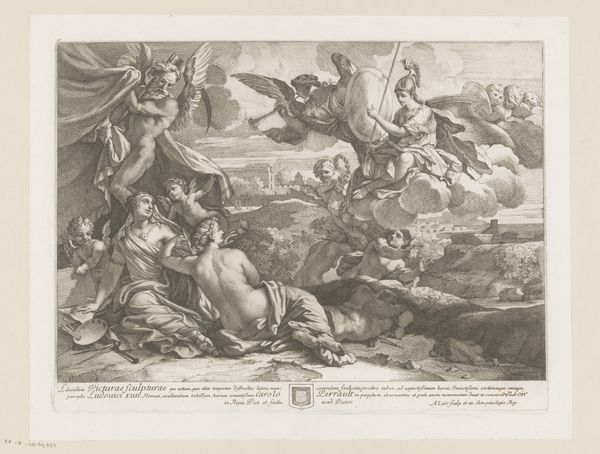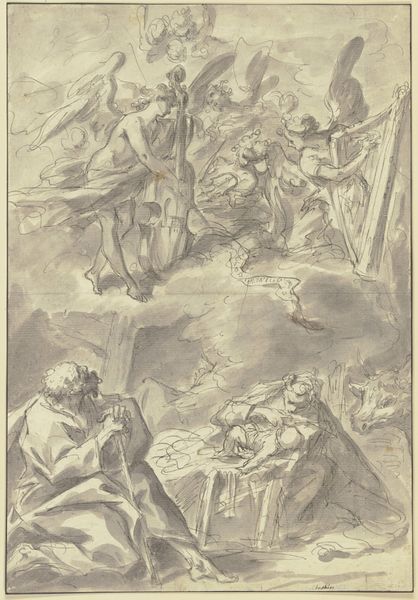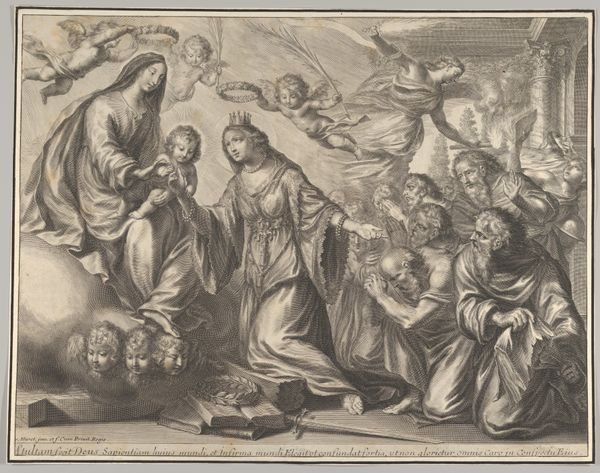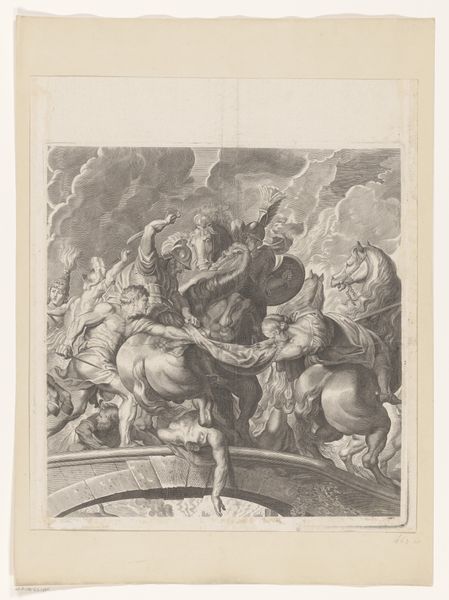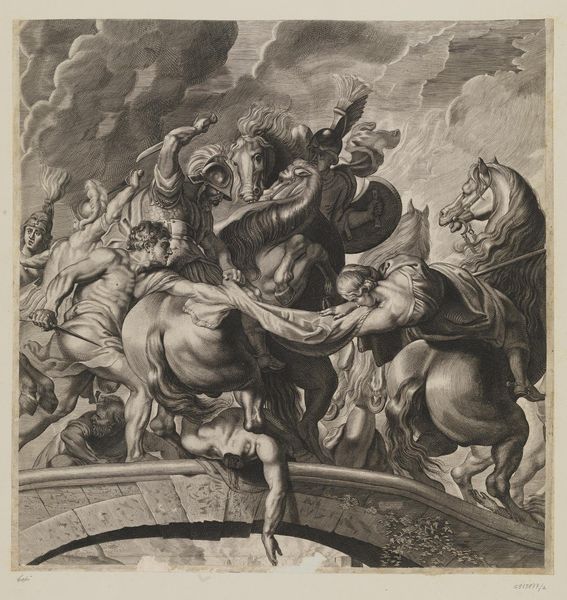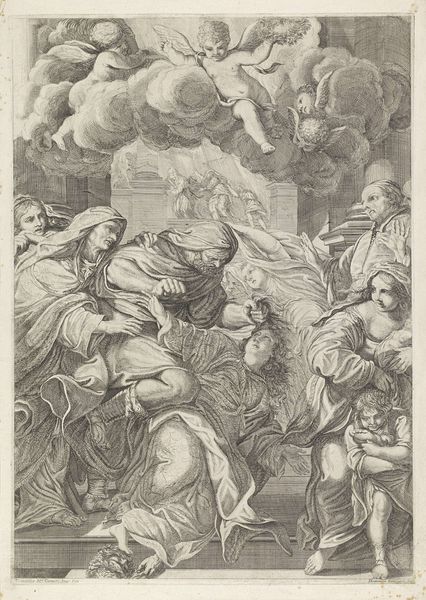
drawing, print, paper, engraving
#
drawing
#
baroque
# print
#
charcoal drawing
#
figuration
#
paper
#
history-painting
#
engraving
Dimensions: 330 × 430 mm
Copyright: Public Domain
Editor: So, this is Christoffel Jegher's "The Coronation of the Virgin," from around 1635, done as an engraving on paper. The scene feels so… triumphant, but also, honestly, a little overwhelming. The figures are crammed together. What do you see in this piece, beyond the surface-level depiction? Curator: Well, let’s start with the obvious: It’s Baroque. The drama, the intensity… but that isn’t just aesthetic. What's interesting here is unpacking the power dynamics at play. We have God the Father and Christ crowning Mary, which seems straightforwardly reverent. But, through an intersectional lens, consider what's absent, what hierarchies are reinforced here? Editor: I see what you mean. It is quite hierarchical and patriarchal when viewed in the context of societal structures present at that time and persisting today. All male figures dominating the crowning. So, is it about power, rather than purely devotion? Curator: Exactly. Jegher presents this image at a specific historical juncture. Think about the role of women, of religious authority, during the Counter-Reformation. Visual rhetoric was potent propaganda. Who gets represented and how reveals much about the social fabric of the time. Can this image also be about the anxieties of that era, projected onto the idealized female figure? Editor: That’s a perspective I hadn’t considered. It's not just a depiction of a holy event; it's an assertion of power, and potentially a response to social tensions too. Curator: Precisely! What narratives are perpetuated here, consciously or unconsciously? These are crucial questions. The image is a construction and that makes it powerful and a potential point of protest against traditional narratives. Editor: Wow, I’m going to have to rethink how I approach Baroque art. Thanks. Curator: And thank you! These dialogues are necessary if we’re hoping to unearth and correct any social injustice around us.
Comments
No comments
Be the first to comment and join the conversation on the ultimate creative platform.
